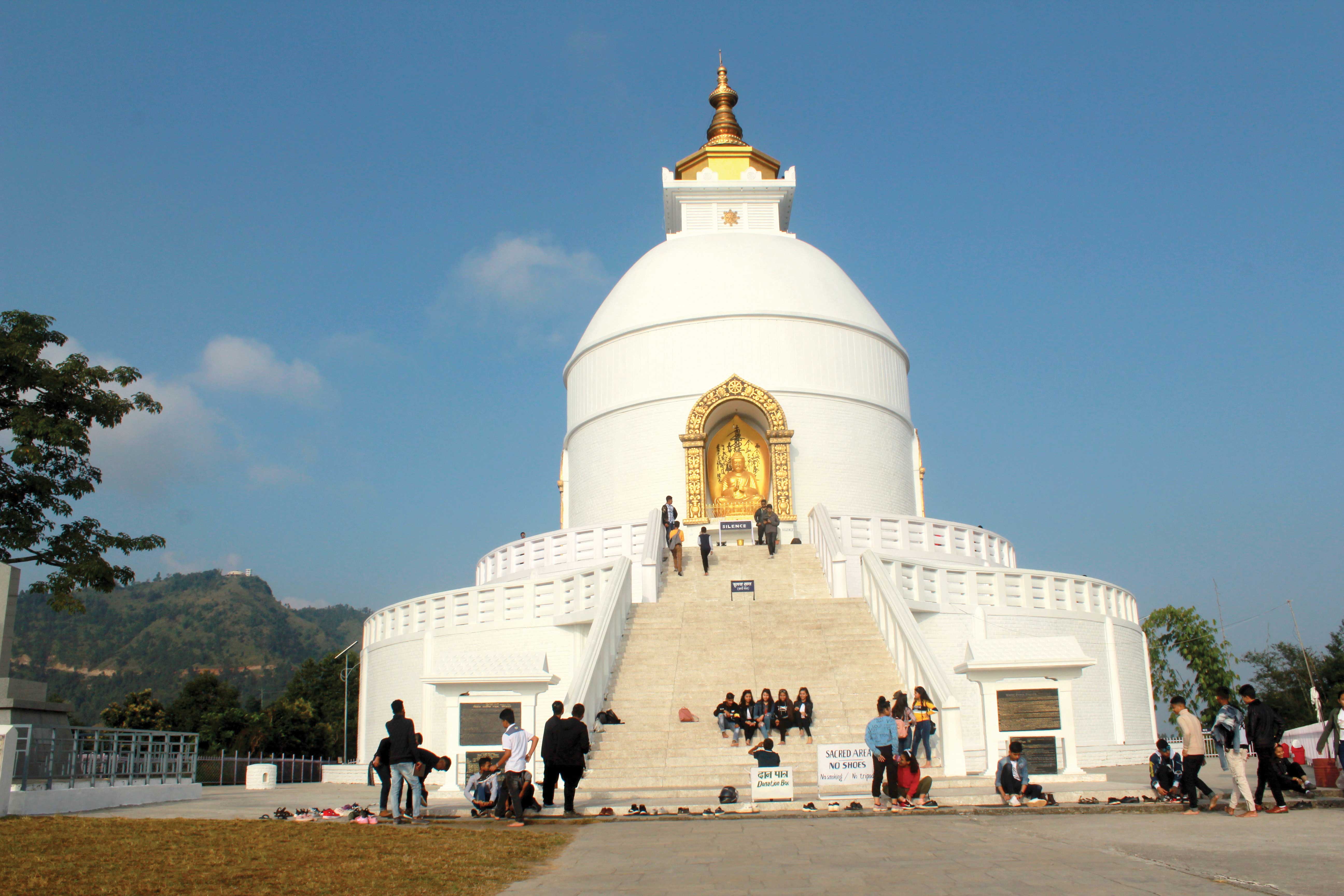Nepal's monsoon season on display in New York.
Festivals have been a part of the Nepali culture since the times they have been inscribed in stone, leaves, barks of trees,and paper. Anyone visiting Nepal, and the Nepalis themselves, are in awe of the number of festivals celebrated, making it a unique and culturally rich nation. Delving back to our cultural past to as far as the Vedic ages, we were nature worshippers, glorifying the sun, wind, rain, earth, and water as the supreme forces of power. In due course of time, these forces acquired anthropomorphic forms, and many are what we worship as gods and goddesses today. Our connection with nature still continues, and most of the festivals celebrated in Nepal are related to exulting of and with nature. Nepal celebrates six seasons, or ritus: Basanta Ritu (spring), Grishma Ritu (early summer), Barkha Ritu (summer monsoon season), Sharad Ritu (early autumn), Hemanta Ritu (late autumn), and Shishir Ritu (winter), each with multiple festivals in them.
The monsoon that we are experiencing now, mostly commencing in June and lasting through September, is very important for the country, which is mostly agrarian. The rainwater recharges dried rivers and groundwater, besides providing irrigation to agricultural crops. As a matter of fact, the monsoon plays an important role in the agricultural, spiritual, social, and cultural life of the people in Nepal.The paddy plantation of this season is highly dependent on the monsoon.
Since the rain is of immense value to the agricultural society, pre-monsoon festival sare celebrated to appease the rain-god. The monsoon commences with the celebration of Jana B?h? Dyah J?tr? (Seto Machhindranath Jatra) in Kathmandu,while Patan celebrates the Bunga Dyah J?tr? (Rato Machhindranath Jatra), and ends with paying homage to Lord Indra, the god of the rain, at Indra Jatra, again in Kathmandu. All these festivals are dedicated to seeking the blessings of the rain-gods for abundant rain to ensure a rich harvest.
Traditionally, locals believed that the formation of mythical and aquatic creature-shapes by clouds is a harbinger of the monsoon. Another local belief is that, the croaking of frogs signal the coming of rains. For this reason, and also because the frogs eat the insects in the field, the farmer community of the valley, the Jyapoos, worship them. Scholar Gautam Vajracharya, infact, mentions that the frogs are mentioned in the same context even in the Rig Veda, which dedicates a whole chapter to this subject.

The Jyapoos celebrate the end of June (Ashad15) as the last day for paddy plantation. The men plough the land, while the women sow the saplings. This is celebrated with much festivity. Men and women, soaked in mud and water, make merry during the plantation with singing and dancing. In-between, they also eat yogurt and beaten rice (dahi and chiura) to energize themselves for the tough work of plantation. The long day ends with a celebration, with good food, locally prepared drinks, music, and guests. In recent times, this festival has attracted the attention of tourists, who also participate enthusiastically. The government has declared this day as ‘National Paddy Plantation Day’ to encourage the farmers.
Last May, I got the opportunity to attend an exhibition titled, “Nepalese Seasons: Rain and Ritual” at the Rubin Museum, New York. I was more than happy after visiting it. Being from the same field, I could appreciate the amount of research and hard work that must have gone into conceptualizing the idea, visualizing the space, writing the text, etc. The exhibition gave a crystal clear message, not only to me, who is culturally linked to the content of the exhibition, but I also felt that anyone would easily understand the exhibition.
The main theme was divided into three sections, pre-monsoon, monsoon, and post monsoon, and the association of the seasons with the traditional art of Kathmandu Valley. It featured almost fifty objects from the museum’s collection, as well as those from eight institutional and private collectors in the United States. Each section provided visual narratives of the related festivals and the lifestyle of the people during these seasons. Another section displayed the relationship between monsoon and the traditional arts of Nepal. Through paintings, sculptures,photographs, graphic illustrations, audio guides,and comprehensive interpretative texts, the theme was beautifully narrated to the comprehension of anyone visiting the exhibition.
One of the highlights of the exhibition, and something that caught my attention, was the extremely long temple banner (bilampau), depicting Avalokite shavara’s legend as narrated in the Gunaknrandavyuha Sutra, a 17th century Newari text. Painted on cloth, it is, according to the exhibition catalogue,one of the longest of its kind (approximately 14x950 inches). Because of its length, it has been carefully displayed in a glass case, and can be scrolled. The banner narrates the legend of Avaloketieshvara as the creator and protector of the three worlds: heaven, Earth, and the netherworld. The stories are presented in various episodes from a Newar point of view, and painted in traditional Nepalese style, however, very similar to the Mughal/Rajput style of painting that was introduced to Nepal during the time of its creation. The banner depicts the role of Avaloketieshvara as the rain deity, with the raindrops depicted as rose petals.
Rain and water are precious necessities for human existence. Not only is the monsoon welcomed with pre and post-rituals, water bodies are also worshipped as life-givers and purifiers. This culture of Nepalis to worship nature and its energies is a tradition practiced since ages. Such practices to be in harmony with nature and its energies make us aware of our interdependence with nature,and by revering rivers, mountains, forests, trees, and animals, we learn to be respectful and express compassion and care for ecology.











